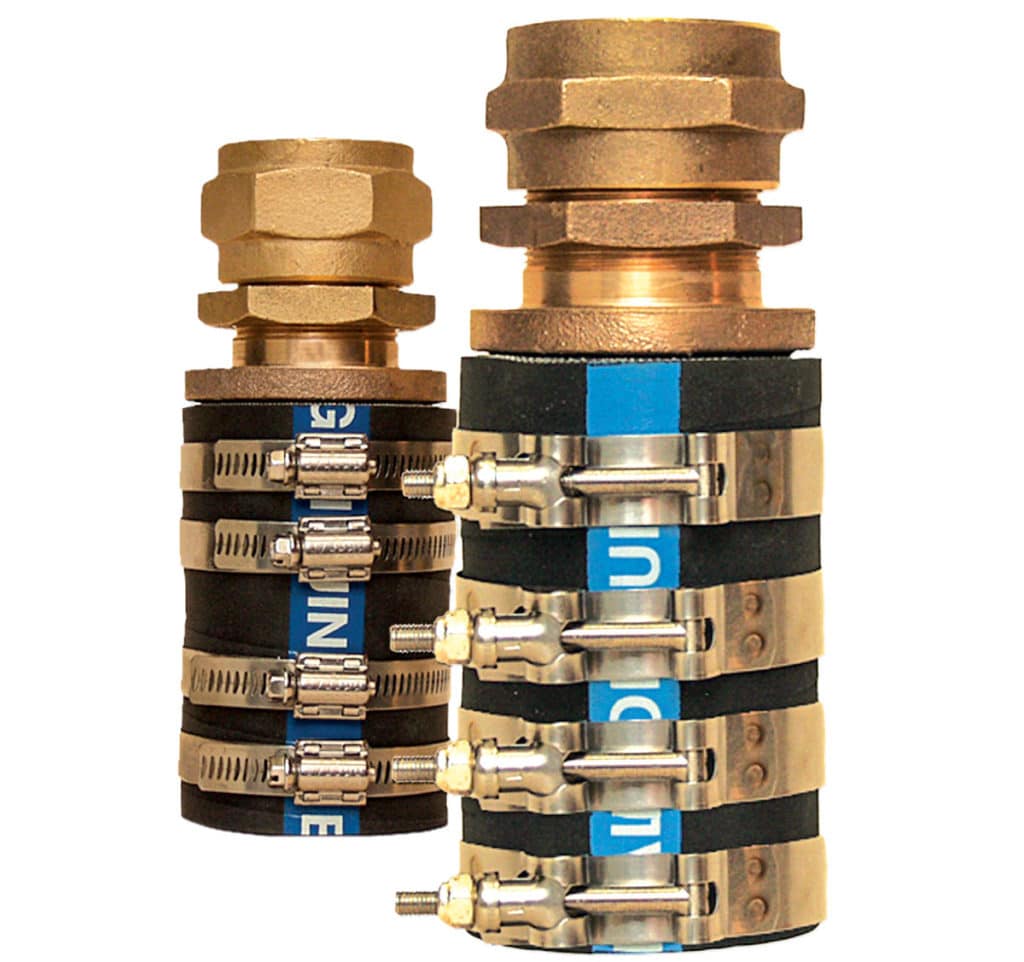
If your boat uses an inboard engine, then it’s important that you know something about shaft seals. Whether you run a twin-engine convertible sport-fisher, a sedan cruiser or a watersports boat; whether you are buying new, buying used or retrofitting a faithful family heirloom; or whether you cruise the blue water or ride the endless wave of a wakesurfer, it is the prop-shaft seal that keeps the water out and lubricates the shaft at its point of exit from the hull. Here’s what to look for in shaft seals.
Lip Seal
Lip seals, like the Tides Marine shaft seal, are dripless seals. The seal is made by a composite plug that bears directly against the shaft, preventing water from getting past the shaft at the stern tube. The shaft turns inside the seal, and lubricating water is plumbed from the engine’s raw-water discharge. There is no dripping. No periodic tightening is required. Lips seals come with a spare seal that slides onto the shaft ahead of the seal assembly so that a worn seal can be replaced without having to haul the boat. They are self-aligning to some extent, thanks to the flexible hose used to connect them to the stern tube. Lip seals require a pristine shaft surface and may require more distance between the gear coupler and stern tube (shaft log to you old salts) than other seal types. The water supply must be regularly checked to ensure safe and proper operation, but lip seals can last for years.
Packing Box
A stuffing or packing box, such as those by Buck Algonquin (now Hydrasearch Recreational), is a shaft seal, usually attached to a hose, that the shaft runs right through as it exits the boat. Made in two parts, one part screws down and compresses strands of wax-impregnated flax (dense, thick cotton strips) packing material against the shaft and the inside of the fixed second part to create a seal. One cranks down until just a drip every 20 seconds or so occurs when the shaft is rotating and no drips occur when the shaft is stopped. Water in the bilge is tolerated in exchange for keeping the seal cool. Periodic tightening and annual packing replacement is required. Over time the shaft can become grooved. Packing boxes are inexpensive and easy to service.
Face Seal
Face seals, such as the PSS shaft seal by PYI, are also dripless shaft seals, requiring less maintenance than a packing box, and like lips seals, they get cooled by the engine’s discharge water. Face seals rely on two machined faces pressed together at 90 degrees to the shaft. One face — the rotor — is split and bolted in place onto the shaft. The other half — the carbon face — is pressed against this split ring with pressure exerted by a sprung bellows. Because face seals do not seal against the shaft directly, they can provide a good seal if the shaft surface is less than perfect, such as an older shaft that has seen service but is still structurally in good shape, making them popular for retrofits. Face seals need to be regularly inspected for leaks, but in practice last for years.
Read Next: Improving Propeller Efficiency
Towing With Dripless Seals
If your boat needs to be towed and has dripless shaft seals, the shafts must be immobilized. The props will freewheel, but no engine-cooling water will be fed to the seal if the engine cannot be kept running. Twin-engine boats can have redundant crossover plumbing so that each engine’s cooling serves both shaft seals. If only one engine is broken down, the other engine can supply lube water to the other’s shaft and the shaft need not be locked.









